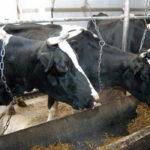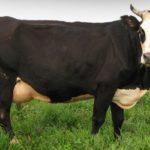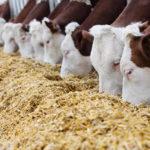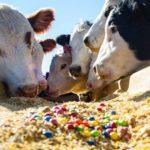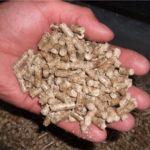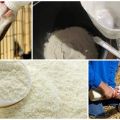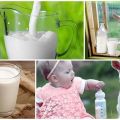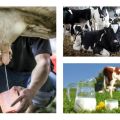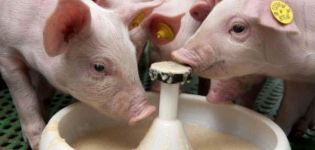Determination of the dry period and how long it takes for cows, preparation
The dry period is understood as the prenatal stage in a pregnant cow. This is the interval from the end of lactation to calving. During this period, the animal does not bring milk, since it carries the baby. In this case, the body prepares for childbirth. In order for a cow to be healthy, 2 months before giving birth, she needs to provide a special housing regimen. This affects the state of her health and subsequent parameters of productivity.
What is the dry period in cows
This term refers to the time from the end of lactation to calving. Dead wood is considered the last stage of pregnancy and lasts about 2 months. This time is required for the cow to recover in order to accumulate strength for childbirth and feeding the calf.
Dry dry cows can be 45-70 days old. The cow needs a special diet. This will help prevent a decrease in milk production after calving. Compliance with all recommendations for care and nutrition will be the key to high milk productivity of the farm.
Organization rules
It is recommended that the cow is properly prepared for launch. Each animal has individual characteristics. These include age, body weight, milk yield. This must be clearly taken into account. You cannot abruptly stop milking a cow on a specific date. However, it is necessary to gradually reduce the synthesis of milk in the udder. This will help bring the animal to a complete stop of lactation. As you approach launch, it is important to reduce the amount of juicy foods that trigger lactation. It includes silage, root crops. It is also worth giving up waste.
To adapt animals to the beginning of the dry period, it is worth doing the following:
- Reduce the number of milkings. At first, it is recommended to switch to double milking, abandoning the lunch one. Then you can leave 1 procedure - in the morning or in the evening. In this case, it is advisable to milk only part of the milk. It is important to do this not to the end to avoid swelling of the udder and the development of mastitis. In this mode, a decrease in milk synthesis will begin and the lactation period will end.
- Apply medication. For this, drugs are prescribed in the form of a suspension for mastitis. They are introduced into the udder. It is recommended to do this through a syringe. This method is considered harmless. It successfully stops lactation and prevents udder inflammation.It is important that the cow does not show any symptoms of mastitis. Therefore, a veterinary examination is required before using this method.
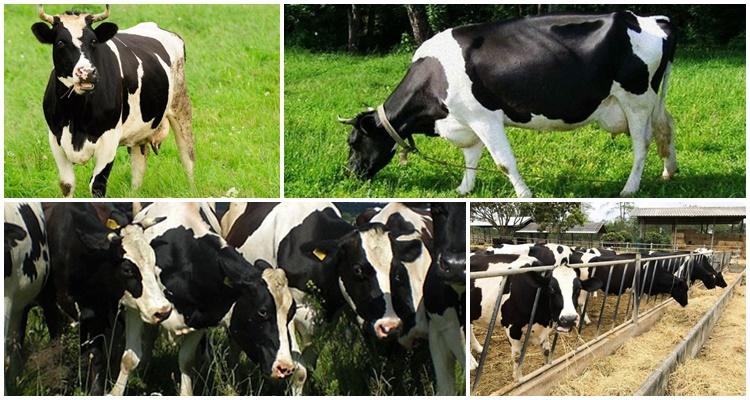
Correct and timely launch affects the final stage of fetal development, helps maintain liver health and has a beneficial effect on the condition of the cow's mammary glands.
Duration
On average, deadwood lasts 2 months. Moreover, it should be at least 45 days and not more than 75. A decrease in the duration of this period provokes disturbances in the growth of the fetus. If the interval is more than 75 days, unjustified economic losses occur. In high-yielding individuals, dead wood can last 80 days.
Some farmers are trying to increase the profitability of their farm and finish preparing their cows for deadwood ahead of time. Sometimes they bring this period to 1 month. This negatively affects the health of the animals and affects the development of the young.
The cow cannot withstand the increased load. Her body does not have time to rest well and stock up on strength before the onset of a new lactation. At the same time, calves are often born weak, there is a death of young animals.
Conscientious farmers don't do that. In normal farms, healthy calves are born that do not require additional nursing. Cows recover easily and produce a lot of milk. At the same time, good milk yield is preserved until the subsequent deadwood.
What deviations can there be
There are certain reasons for the increased dry period. This is required by some groups of individuals in which resources require a longer restructuring. Normally, dead wood can increase in young individuals who are preparing for calving for the first time.
This situation is also observed in cows that gave a lot of milk, and then she needed a break.
If the pregnancy stage is prolonged, it is not recommended to worry. This is considered a variant of the norm. It is important to take into account that the compulsory reduction of this period is an unfavorable scenario. As a result, there is a risk of underdevelopment of the fetus or a difficult course of labor. Postpartum complications are also possible.
Often, disturbances in the normal course of the dry period are due to problems in feeding the pet. Therefore, it is so important to make adjustments to normalize the duration of the period without lactation.
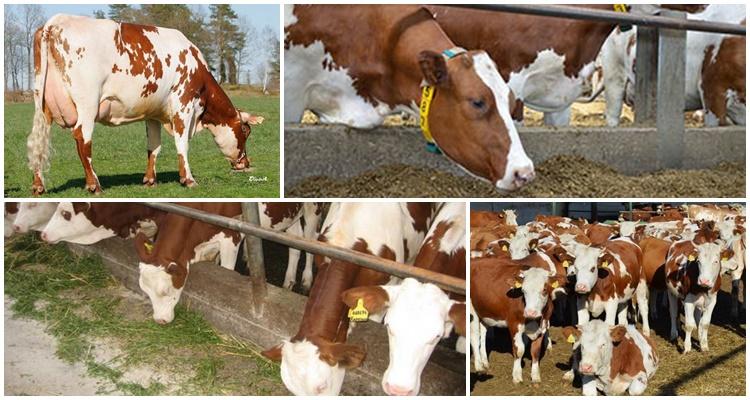
Cow nutrition
A balanced diet during dry periods is considered a priority for the cow and calf. Without a normal amount of vitamins, micro- and macroelements, the body will not be able to function normally. As a consequence, there is a risk of depletion and problems with stockpiling. This will cause difficulties with calving, lead to inflammation and complications after childbirth.
Cows that had nutritional problems during the dry period have a decrease in milk volume. Moreover, full lactation begins much later. The newborn calf will appear sick or emaciated and have trouble gaining weight. There is also a threat of the development of various pathologies.
In the last months of pregnancy, the cow should be fed differently than at other times. At this stage, she is advised to additionally give vitamins and energy supplements. It is recommended to introduce complementary foods in stages. This will help avoid stress.
Prevention of hypokinesis
In order for the calving period to pass easily and not cause complications, it is important to engage in the prevention of hypokinesis. This term is understood as a lack of activity and physical exertion on the body. Deficiency of physical activity causes problems with normal blood circulation, decreased appetite, increased risk of various pathologies during childbirth.In this case, the animal needs to be provided with walks on the street.
Do not forget about the usefulness of sunbathing. With their lack, there is a risk of vitamin D deficiency, which is very important during this period. Adequate activity not only maintains bone and muscle tone, but also helps to recover from childbirth.
Overfeeding a cow
Many farmers often face overfeeding cows. This problem is often seen when consuming concentrates. They are used to increase the intensity of lactation and the amount of milk.
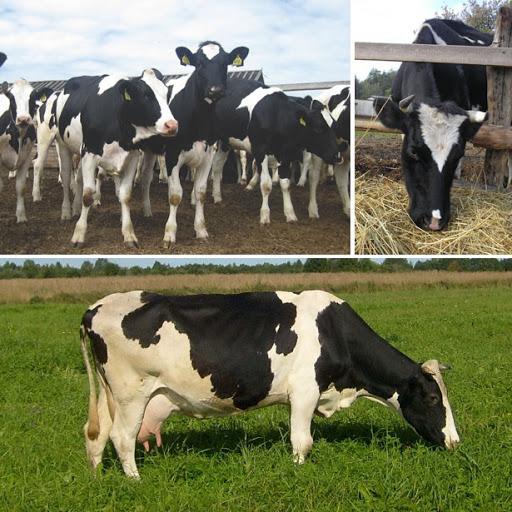
If you are overweight, there is a risk of such problems:
- difficulties with calving;
- persistent inflammation;
- decrease in lactation parameters;
- ketosis;
- disturbances in the work of endocrine organs.
To avoid such problems, it is important to monitor the cow's weight and reduce the volume of concentrates during the second half of pregnancy. During the dry period, sharp fluctuations in the body weight of the animal are contraindicated.
What food is forbidden to give
It is recommended to feed cows with quality food without signs of rot or mold. Do not use food leftovers from milking individuals. It is recommended to defrost frozen food and give it to animals immediately. The cow should not be given cotton meal or cake. Pulp, potato pulp are prohibited. Such food can cause abortion or severe weakness of the young.
It is recommended to remove salt from the diet. It is also worth reducing the amount of calcium present in beet tops. There is this substance in red clover and alfalfa. Such restrictions are needed to prevent birth paresis and swelling.
Tips for caring for dry cows
To avoid problems during the dry period, it is important to follow these recommendations:
- reduce stress levels;
- do not tie the cow and ensure her freedom of movement;
- let go for walks for at least 8 hours;
- observe the rules of animal hygiene and periodically irradiate with ultraviolet light;
- clean the premises;
- observe the optimal parameters of temperature and illumination.
Taking good care of your pets minimizes the likelihood of secondary ketosis that can occur immediately after birth. Good nutrition during the dry period helps to ensure the health of the cow and her future offspring.

